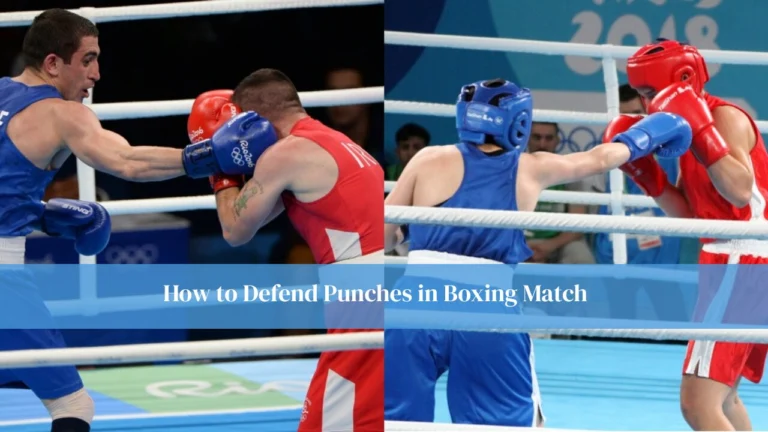Boxing is a combat sport with a rich history, long-standing cultural significance, and countless benefits for practitioners. From its ancient origins to its modern-day professional leagues, boxing has evolved into one of the most popular and widely followed sports globally. This ultimate guide to boxing will provide you with everything you need to know about the sport, including its fascinating history, the core techniques and skills involved, the physical and mental benefits, and insights into how you can get started in boxing.
Whether you’re someone interested in taking up the sport, an athlete looking to refine your skills, or a fan eager to know more about boxing, this article is for you. Dive into the exciting world of boxing as we explore its depth and highlight what makes it such a dynamic and rewarding sport.
History of Boxing
Boxing is one of the oldest sports in the world, with its origins dating back to ancient civilizations. Throughout the years, boxing has undergone many transformations, shaping it into the modern sport we recognize today.
The Origins of Boxing
The earliest evidence of boxing dates back to the ancient Sumerians, who depicted it in carvings around 3000 BC. However, it was the ancient Greeks who first institutionalized boxing as part of the Olympic Games around 688 BC. Greek boxing, known as “pankration,” was a no-holds-barred version of the sport that included both striking and grappling. The Romans later adopted boxing but made it even more brutal, introducing metal-studded gloves that made the sport far more dangerous. These ancient boxing bouts were often lethal and were primarily staged for entertainment purposes.
Boxing in the Modern Era
The sport as we know it today began to take shape in the 17th and 18th centuries in England. In 1681, the first recorded boxing match took place, and by the early 19th century, the bare-knuckle boxing era began. During this time, fights were brutal and without any rules, and the winner was usually the last person standing. In 1867, a major turning point in boxing came when the Marquess of Queensberry Rules were introduced. These rules laid the foundation for modern boxing, introducing features such as rounds, weight classes, and the use of gloves.
Boxing in the 20th Century and Beyond
The early 20th century saw the rise of boxing legends such as Jack Johnson, Joe Louis, Muhammad Ali, and Sugar Ray Robinson. These athletes not only shaped the future of the sport but also transcended boxing, becoming global icons. Today, boxing continues to evolve with numerous weight divisions and major boxing events such as the WBC (World Boxing Council) and WBA (World Boxing Association) championships, drawing millions of viewers worldwide.
The Basics of Boxing
Boxing is a sport that involves two fighters who use their fists to strike their opponent while avoiding being hit. The primary goal is to land more punches than the opponent within a set number of rounds while avoiding damage yourself. Understanding basic techniques is essential for anyone looking to excel in boxing, whether for fitness or competition.
Boxing Techniques
The core techniques in boxing involve a combination of offensive and defensive skills. These include a variety of punches and movements that together form the foundation of boxing.
The jab is a quick, straight punch thrown with the lead hand. It’s the most common punch in boxing, used to set up other strikes and control the distance. The cross, a straight punch from the rear hand, is often the most powerful punch with knockout potential. The hook comes in a circular motion and targets the side of the opponent’s body or head, while the uppercut is thrown from below and often aims for the chin.
Defensive techniques include the slip, which involves moving your head to avoid punches, and the bob-and-weave, where a fighter ducks and shifts position. Footwork is equally crucial, helping boxers maintain balance, distance, and control of the ring. These skills, when practiced consistently, turn raw beginners into skilled fighters.
Benefits of Boxing
Boxing offers a wide range of benefits that extend beyond just physical conditioning. It is a sport that challenges the body and the mind, offering both short-term gains and long-term improvements.
Physical Benefits of Boxing
Boxing provides an intense cardiovascular workout that improves endurance, stamina, and overall heart health. Each session, whether it’s sparring or hitting a bag, elevates your heart rate and provides an effective cardio session. Additionally, boxing works all major muscle groups—arms, shoulders, legs, and core—helping build muscular strength and endurance over time.
Weight loss is another major benefit, as boxing is a high-intensity workout that burns a significant number of calories. Combined with proper nutrition, it can help reduce body fat and promote a lean, athletic physique. Boxing also enhances coordination and reflexes, as fighters must react quickly to an opponent’s movements. The twisting, ducking, and pivoting motions used in boxing further promote flexibility and agility.
Mental and Emotional Benefits of Boxing
Beyond physical gains, boxing provides a valuable mental outlet. The physical exertion involved in training releases endorphins, which help improve mood and reduce stress levels. This makes boxing a powerful tool for managing anxiety and boosting overall emotional well-being.
Boxing also instills discipline, focus, and mental toughness. The structured nature of training teaches patience and perseverance. Regular practice demands consistency, whether it’s in the gym or sticking to a nutrition plan. Over time, these habits build a strong sense of confidence and resilience, not just inside the ring but in everyday life as well.
Getting Started in Boxing
If you’re new to boxing, getting started might seem daunting, but it’s a step-by-step journey that anyone can undertake. The first step is finding the right environment where you can learn and grow.
Finding a Gym or Boxing School
Look for a local boxing gym or school that offers classes for beginners. These programs are designed to introduce you to the sport gradually, teaching the basics of punching, defense, and movement. A good gym will provide a supportive environment with trained coaches who can help you progress at your own pace.
Essential Equipment for Boxing
Having the right gear is essential for safety and performance. Boxing gloves are a must-have for both training and sparring, offering protection for your hands and your opponent. Hand wraps are used underneath the gloves to support the wrists and knuckles. A mouthguard is important during sparring sessions to protect your teeth, while a jump rope is a key tool for improving footwork and stamina. A heavy bag allows you to practice strikes and combinations effectively.
Training Routines
A balanced boxing routine incorporates various elements to build a complete fighter. Cardio workouts such as running or jump rope enhance endurance, while strength training using bodyweight exercises builds core and upper body strength. Technical drills focus on refining punches and defensive skills. Sparring, introduced gradually, helps you apply what you’ve learned in real-time scenarios, enhancing your timing, reflexes, and strategy.
FAQs
1. How do I get started in boxing?
To begin, find a local boxing gym and start with beginner classes. Focus on learning the basics, such as proper punching techniques and footwork.
2. Is boxing a dangerous sport?
Like any combat sport, boxing carries a risk of injury, especially at the professional level. However, with proper technique, protective gear, and precautions, the risk is minimized.
3. What are the weight classes in boxing?
Boxing features several weight classes to ensure fighters compete against opponents of similar size and weight. Common classes include lightweight, welterweight, middleweight, and heavyweight.
4. Can I train in boxing without sparring?
Yes! Many boxers train for fitness and technique without ever participating in sparring. However, sparring is necessary if you wish to compete at a higher level.
Conclusion
Boxing is more than just a sport it’s a way of life. From its ancient origins to its modern-day dominance, boxing has stood the test of time. It offers numerous benefits, from physical fitness to mental resilience, making it a popular choice for people of all ages and backgrounds.
If you’re interested in boxing, there’s no better time to start than now. Whether you’re training for fitness, competition, or simply as a hobby, boxing can provide a sense of accomplishment, discipline, and strength. So, get ready to step into the ring, develop your skills, and see how boxing can transform your life!




